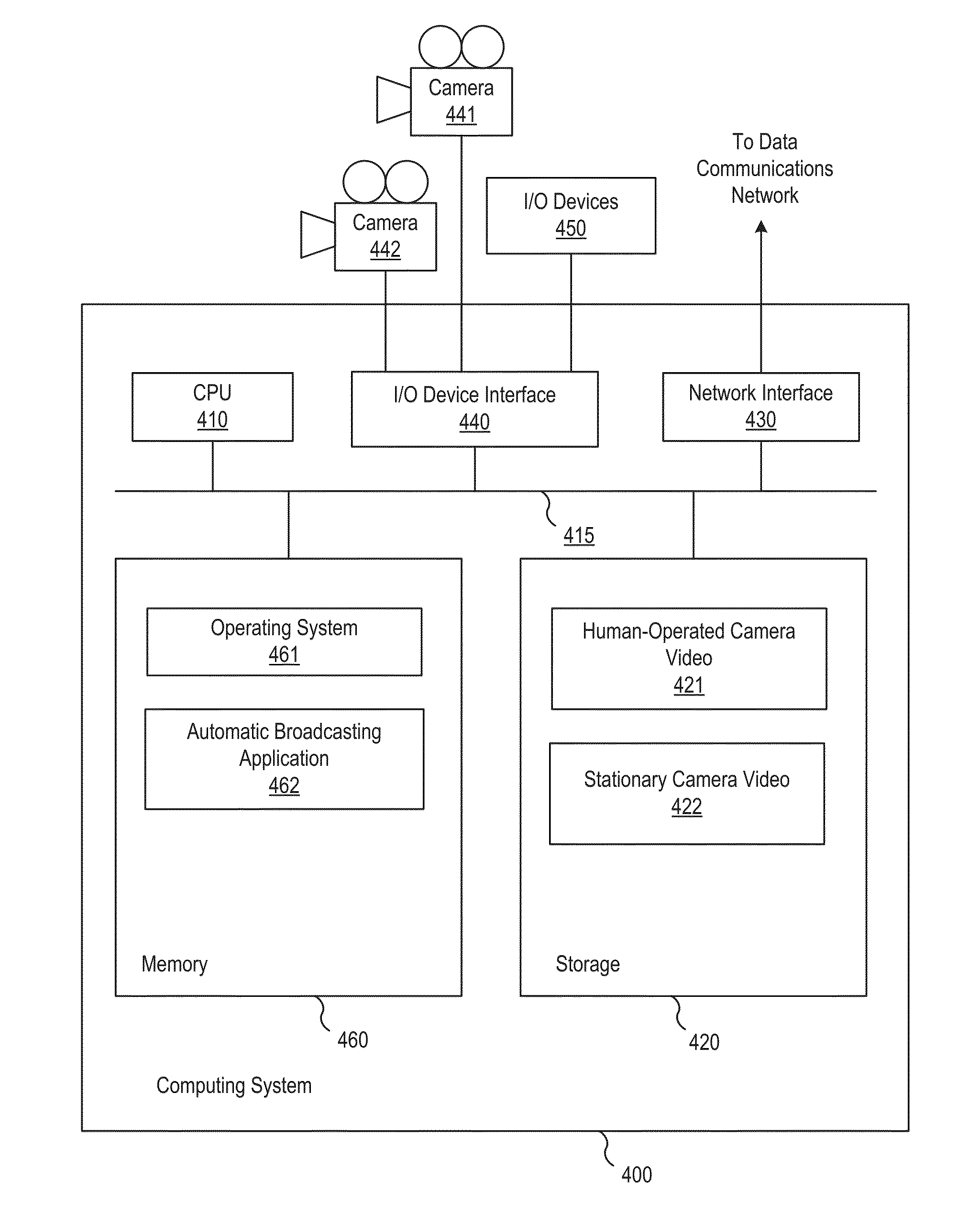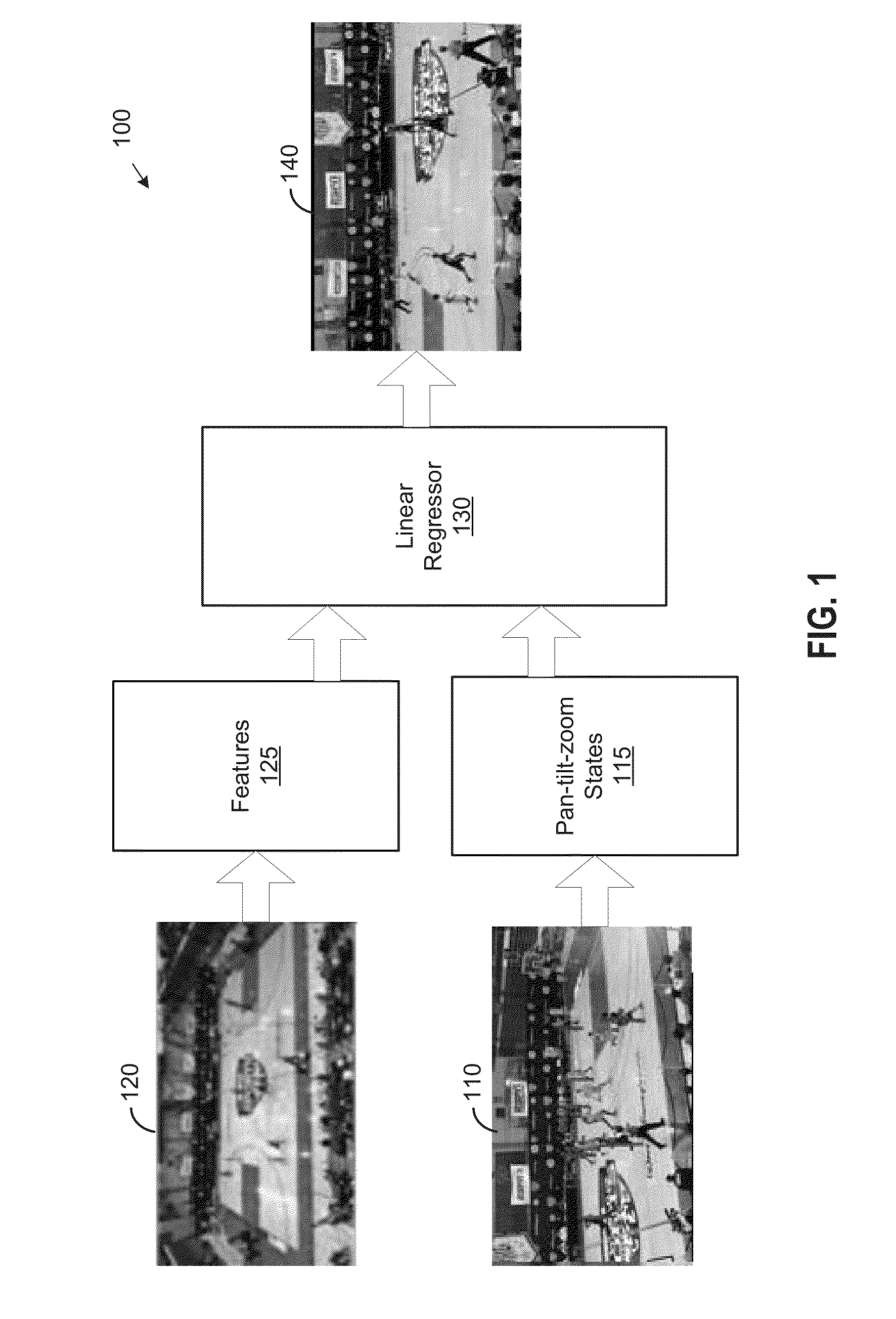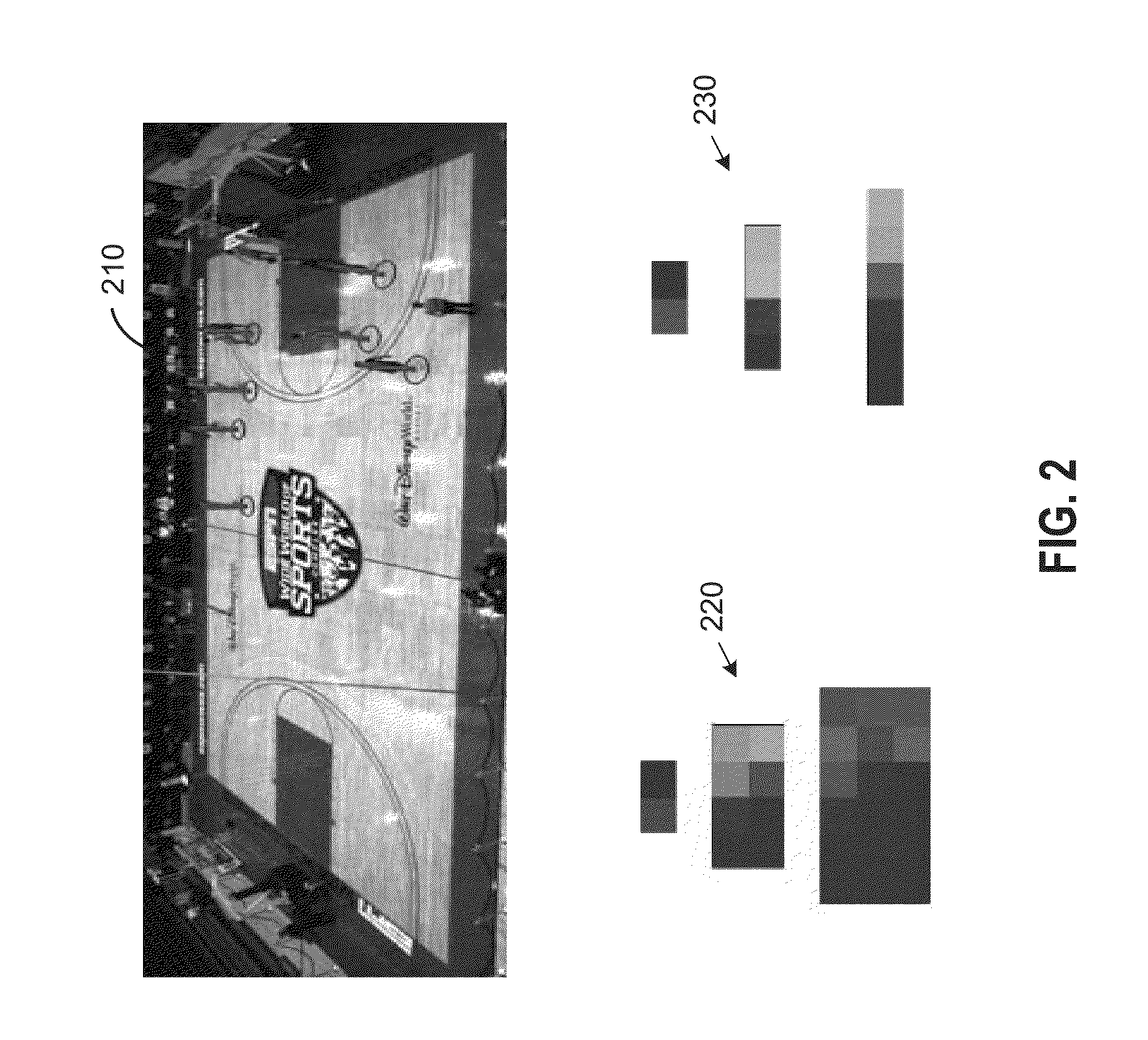Method and system for mimicking human camera operation
a technology of human-computer interaction and camera operation, applied in the field of automatic capture video, can solve the problems that the hand-coded autonomous camera system cannot anticipate action and frame its shots with sufficient, and the production of such systems tends to look roboti
- Summary
- Abstract
- Description
- Claims
- Application Information
AI Technical Summary
Benefits of technology
Problems solved by technology
Method used
Image
Examples
Embodiment Construction
[0013]This disclosure provides techniques for an autonomous camera system to more effectively mimic a human camera operator. In one embodiment, a supervised regression problem is applied to formulate camera planning. More specifically, an automatic broadcasting application receives one video input captured by a human-operated camera and another video input captured by a stationary camera with a wider field of view. The automatic broadcasting application extracts feature vectors and pan-tilt-zoom states from the stationary camera and the human-operated camera, respectively. The automatic broadcasting application uses the feature vector to represent what it sees, and the feature vector may include, e.g., a centroid, a heat map, or a spherical map that describes player locations in the stationary camera video input. Further, the automatic broadcasting application learns, based on the extracted feature vectors and pan-tilt-zoom states, a regressor. This regressor is a function that rece...
PUM
 Login to View More
Login to View More Abstract
Description
Claims
Application Information
 Login to View More
Login to View More - R&D
- Intellectual Property
- Life Sciences
- Materials
- Tech Scout
- Unparalleled Data Quality
- Higher Quality Content
- 60% Fewer Hallucinations
Browse by: Latest US Patents, China's latest patents, Technical Efficacy Thesaurus, Application Domain, Technology Topic, Popular Technical Reports.
© 2025 PatSnap. All rights reserved.Legal|Privacy policy|Modern Slavery Act Transparency Statement|Sitemap|About US| Contact US: help@patsnap.com



